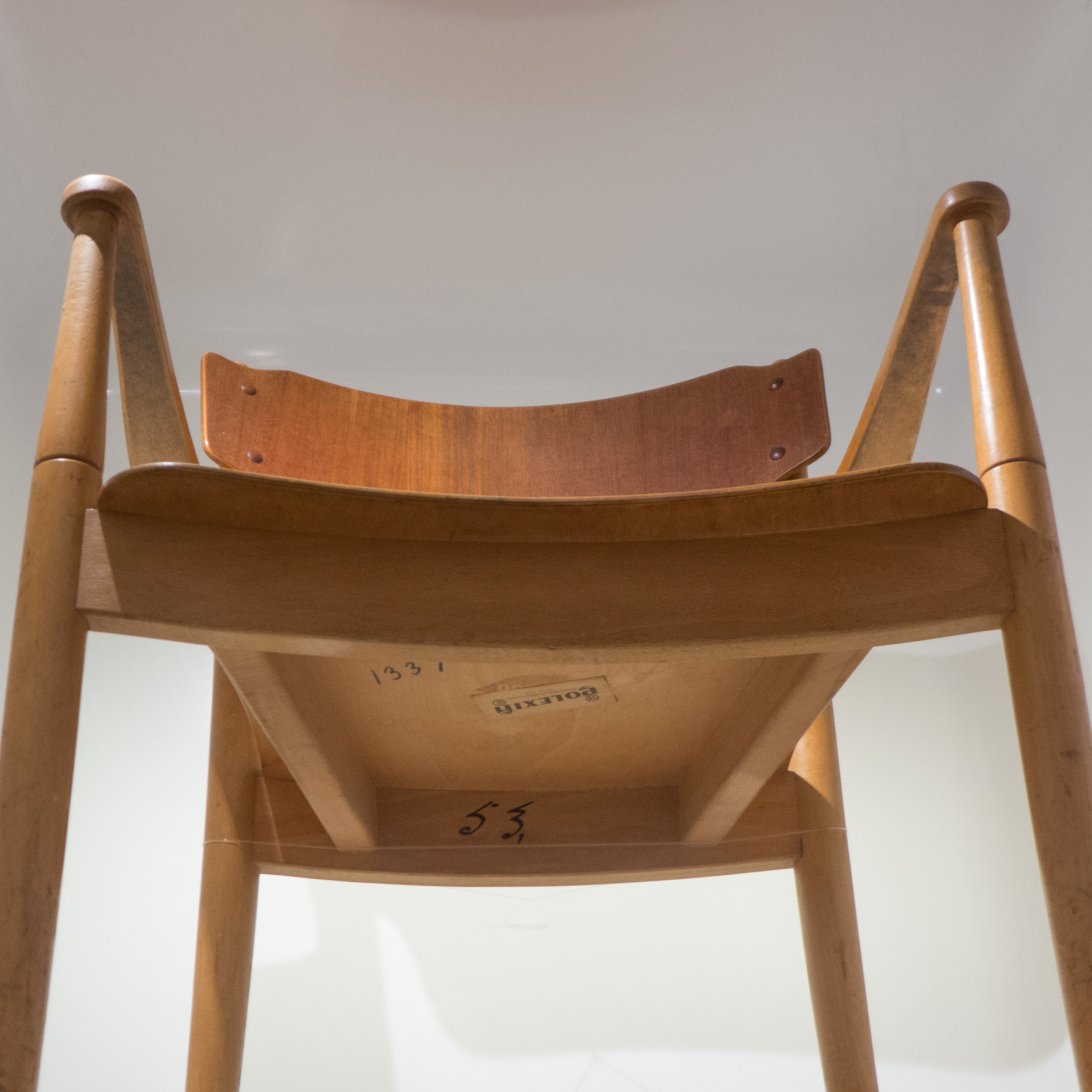Ax chair by Peter Hvidt and Orla Mølgaard-Nielsen 1947
/Ax Chair in the permanent collection of Designmuseum Danmark in Copenhagen
This is an interesting chair because rather than forming a plywood shell, it uses laminated and moulded wood for the chair seat and the back rest that are supported between frames of laminated and bent beech in a form but not a style reminiscent of the chairs by the Finnish architect Alvar Aalto from the 1930s.
The Ax series that included a number of chairs and tables was some of the first Danish furniture to be made after the War that was aimed specifically at the export market. Many of the pieces were designed so that they could be packed as parts and then assembled at the destination and in the 1950s furniture made in Denmark in more expensive woods such as teak or mahogany tended to be exported rather than sold to the home market.
Two chairs were made in this form - one narrower, the height and width for a traditional dining chair, and this design wider and lower as an easy chair.

































